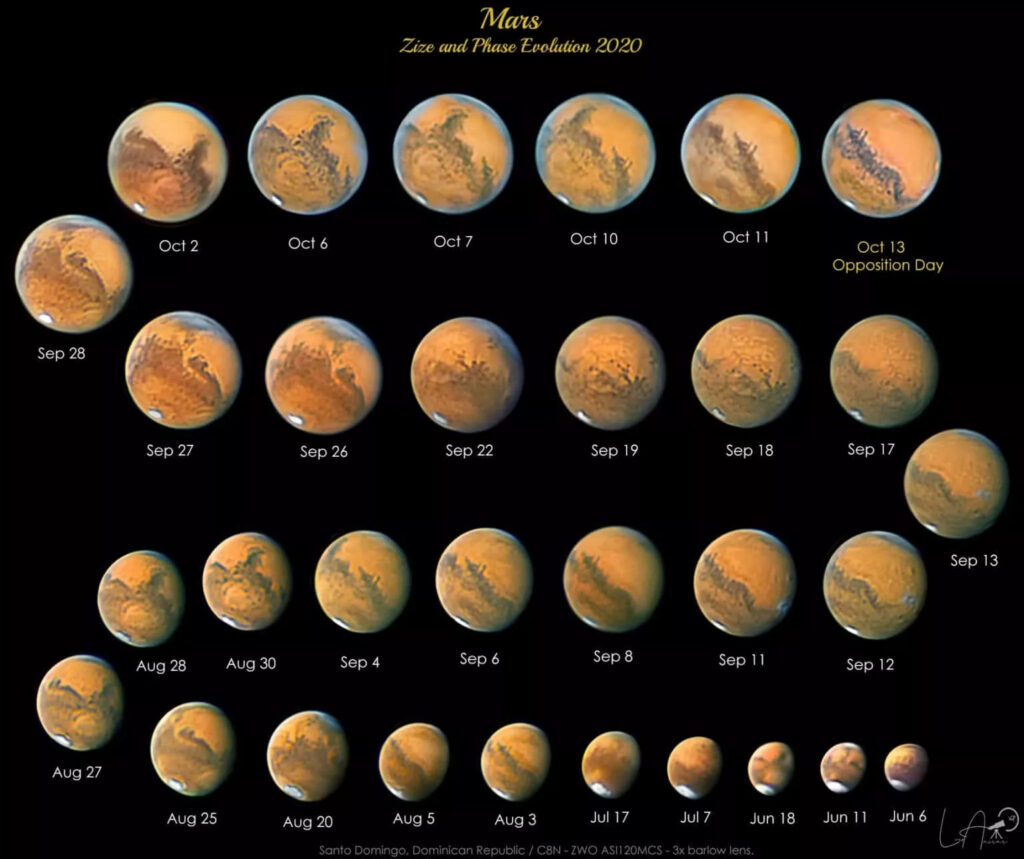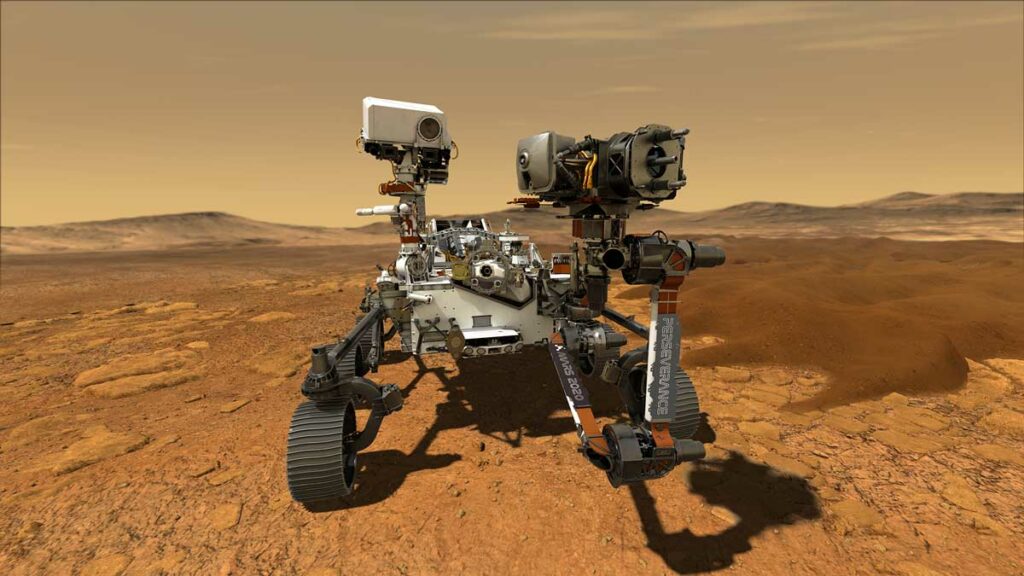How to See Mars through a Telescope
SCIENCE, 19 Apr 2021
Adam Kirk | Love the Night Sky - TRANSCEND Media Service
16 Apr 2021 – When it is nearby, seeing Mars through a telescope is a spectacular sight. When it is at its farthest, the view is much less inspiring.
Although it’s our neighbor in space, the distance between Mars and Earth fluctuates massively over a two-year period. At their closest, they can be just 35,000,000 miles (56 million km) apart. When they are on opposite sides of their respective orbits, Mars can be 250,000,000 miles (401 million km) apart.
You won’t be surprised to learn that the view you’ll get of Mars in your telescope when it’s 7x closer to us is spectacular compared to when it is at its most distant.
At its closest, the disc can be 25 arcseconds in diameter, at its furthest, it can be just 3.5″ across, smaller than Uranus in your telescope. This has a significant impact on the planet’s apparent magnitude too, which can be as dim as +2.0, or as bright as -3.0.
Suffice to say, you need to pick your moment to look at Mars. As the image above shows, much of the time it is a tiny, uninspiring red dot. When it is nearby, however, it is a large disc, rich in features to be discovered.
Read on to find out when you should be looking for the red planet, and what to look for when you’ve found it.
When Is Mars Visible?
2020 was a great year for seeing Mars. In October of last year, it came as close to Earth as it has for more than eight years. We saw the Martian disc reach 22 arcseconds wide, and it shone at magnitude -2.6.
Unfortunately, this means that 2021 is a fallow year for Mars. There is no opposition to be enjoyed and the planet spends the first half of the year getting smaller and fainter as it moves closer to the Sun.
This means its surface features and its moons, Phobos and Deimos, are practically impossible to see without a large telescope.
The story gets no better as 2021 progresses: Mars gets too close to the Sun to be seen from around July. It reaches conjunction on 08 October, when it will be directly behind the Sun from our perspective, and does not appear in dark skies again until the very last days of the year.
However, outside of the conjunction period, Mars is visible in our night skies. The table below shows the rise and set times for the red planet at mid-month for the year. The third column shows what time it will be at its highest.
Note that the planet rises in the morning and is in the sky only during daylight hours from September to November.
TO CONTINUE READING Go to Original – lovethenightsky.com
_____________________________________________
My name is Adam Kirk and I’m the astronomer behind the popular amateur astronomy website Love the Night Sky. More…
Tags: Mars, NASA, Perseverance Rover, Space science
DISCLAIMER: The statements, views and opinions expressed in pieces republished here are solely those of the authors and do not necessarily represent those of TMS. In accordance with title 17 U.S.C. section 107, this material is distributed without profit to those who have expressed a prior interest in receiving the included information for research and educational purposes. TMS has no affiliation whatsoever with the originator of this article nor is TMS endorsed or sponsored by the originator. “GO TO ORIGINAL” links are provided as a convenience to our readers and allow for verification of authenticity. However, as originating pages are often updated by their originating host sites, the versions posted may not match the versions our readers view when clicking the “GO TO ORIGINAL” links. This site contains copyrighted material the use of which has not always been specifically authorized by the copyright owner. We are making such material available in our efforts to advance understanding of environmental, political, human rights, economic, democracy, scientific, and social justice issues, etc. We believe this constitutes a ‘fair use’ of any such copyrighted material as provided for in section 107 of the US Copyright Law. In accordance with Title 17 U.S.C. Section 107, the material on this site is distributed without profit to those who have expressed a prior interest in receiving the included information for research and educational purposes. For more information go to: http://www.law.cornell.edu/uscode/17/107.shtml. If you wish to use copyrighted material from this site for purposes of your own that go beyond ‘fair use’, you must obtain permission from the copyright owner.




